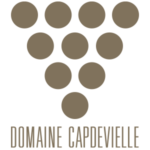
A great wine with ancient origins…
Traces of ancient wild vines have been found locally in the nearby Vallée d’Aspe. These plants bearing fruit, rich in juice and laden with sugar and tannins, must have been feasted on by prehistoric man.
During Gallo-Roman times, vineyards were established in the Béarn, with the first exports of wine being made by the Vikings.
The beginnings of commercialisation came in the Middle-Ages with the minting of coins in Morlaàs, then capital of the Béarn, to allow for trade in wine. The eleventh century saw the start of regulation covering the processes, the grape harvests, the wine-making and trade.
THE HIGHPOINT...
Encouraged and developed by the House of Navarre in the sixteenth century, Jurançon began to gain fame.
Jeanne d’Albret dedicated himself to the planting and improvement of his vineyards around the château of Pau.
His father, Henri d’Albret, is renowned for the baptism ceremony of his little son, the future King Henry IV of France, where he is said to have rubbed the child’s lips with a clove of garlic and then moistening them with Jurançon. This tradition, said to give strength, health and good character, was perpetuated in the House of France, forming part of every royal baptism from then on.
By the eighteenth century, the Jurançon vinyards were flourishing, covering an area of 5,577 hectares.
Exports were at their height, through Peyrehorade on the River Adour to Bayonne, destined for England and the Netherlands.
Jeanne d’Albret dedicated himself to the planting and improvement of his vineyards around the château of Pau.
His father, Henri d’Albret, is renowned for the baptism ceremony of his little son, the future King Henry IV of France, where he is said to have rubbed the child’s lips with a clove of garlic and then moistening them with Jurançon. This tradition, said to give strength, health and good character, was perpetuated in the House of France, forming part of every royal baptism from then on.
By the eighteenth century, the Jurançon vinyards were flourishing, covering an area of 5,577 hectares.
Exports were at their height, through Peyrehorade on the River Adour to Bayonne, destined for England and the Netherlands.
THE HIGHPOINT...
A DIFFICULT TIME...
Towards the end of the nineteenth century, the vineyards were hit by successive crises: economic, with the decline of exports because of protectionism, and disease, with powdery mildew striking in 1852 and then phylloxera from 1882.
These factors brought about a significant reduction in the amount of land cultivated for wine production.
World War One caused an exodus of people from the countryside, which again weakened the vineyards of the Kings of Navarre.
By the end of the Second World War, there were 60% less vines being grown, and the wine was no longer sold. Production became very fragmented, which no longer allowed for the consistent production of quality wine.
These factors brought about a significant reduction in the amount of land cultivated for wine production.
World War One caused an exodus of people from the countryside, which again weakened the vineyards of the Kings of Navarre.
By the end of the Second World War, there were 60% less vines being grown, and the wine was no longer sold. Production became very fragmented, which no longer allowed for the consistent production of quality wine.
A DIFFICULT TIME...
RENAISSANCE…
Despite all of this, in 1936 Jurançon won its coveted A.O.C classification, (appellation d’origine contrôlée) and in the fifties, its producers worked hard to bring prestige back to the appellation.
In 1975 Jurançon Sec, in turn, won its A.O.C classification.
Today, the Jurançon vineyards cover 1,200 hectares of land and the work, striving for exceptional vintages harvest after harvest, ensures the production of wines of the highest quality. Jurançon wine is regaining its rightful place amongst the great white wines of France.
In 1975 Jurançon Sec, in turn, won its A.O.C classification.
Today, the Jurançon vineyards cover 1,200 hectares of land and the work, striving for exceptional vintages harvest after harvest, ensures the production of wines of the highest quality. Jurançon wine is regaining its rightful place amongst the great white wines of France.
RENAISSANCE…
